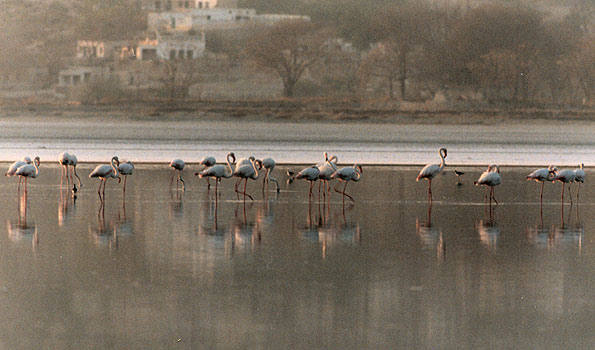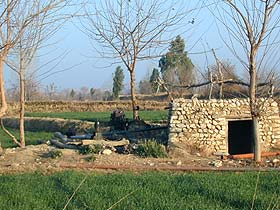


The Salt Range Wetlands Complex comprises of five independent wetlands: Kallar Kahar, Khabbeki, Ucchali, Jahlar and Namal Lakes. The entire Salt Range Wetlands Complex has a total length of 175 km parallel to the Salt Range Escarpment that runs from Jhelum, in the east, to Kalabagh in the west. The Ucchali Wetlands Complex, constituting of Ucchali, Khabbeki and Jahlar Lakes, has been designated as a Wetland of International Importance under the Ramsar Convention, a distinction it shares with only eighteen other wetlands in Pakistan. The three main lakes of Ucchali Wetlands Complex are situated inside a cup-shaped catchment area called the Soan Valley, while Namal and Kalar Kahar Lakes are located on the periphery of this Valley.
The area is rich in biodiversity and is the habitat of one of the endemic and endangered species of the country, the Punjab Urial (Ovis vignei punjabiensis). Other species, important from the conservation viewpoint are Chinkara (Gazelle bennettii) and Red Fox (Vulpes vulpes). These wetlands presently support the wintering flocks of White-headed Duck (Oxyura leucocephala). These lakes also support three other bird species listed in the IUCN Red Data Book the Cinereous Vulture (Aegypius monochus), the Imperial Eagle (Aquila heliaca) and the Sociable Plover (Vanellus gregarius). Furthermore, Greater Flamingos (Phoenicopterus ruber), Pied Harrier (Circus melanoleucos), Greylag Goose (Anser anser) and the Ferruginous Duck (Aythya nyroca) also visit these wetlands.
 Socio-economic conditions in the Salt Range Wetlands Complex present a picture of excessive population pressure combined with intensive use of natural resources for livelihoods and daily needs. The main occupations in the region comprise of agriculture and government service, especially in the armed forces. The level of industrial development is low.
Socio-economic conditions in the Salt Range Wetlands Complex present a picture of excessive population pressure combined with intensive use of natural resources for livelihoods and daily needs. The main occupations in the region comprise of agriculture and government service, especially in the armed forces. The level of industrial development is low.
Agricultural plots tend to be small, usually quarter of an acre, and there is a clear trend towards land ownership as a form of wealth even if the land owned is not cultivable. All land in and around the lakes is privately owned, including the lake beds, which becomes available for cultivation when the water level has receded. Principal crops grown in the area are wheat in winter and vegetables in the summer. Wetlands provide a crucial source of irrigation in this essentially semi arid area. Grazing pressure in the region has badly eroded most communal grazing areas. Wood extraction is undertaken extensively both for the domestic fuel market and for supply to urban centres. The effects of deforestation on both shamilat (community forests) and Government forests have been extensive. Lack of infrastructure development has meant that the lakes are used for common household purposes such as watering cattle and washing clothes although the water of several lakes is reportedly too saline for human consumption.